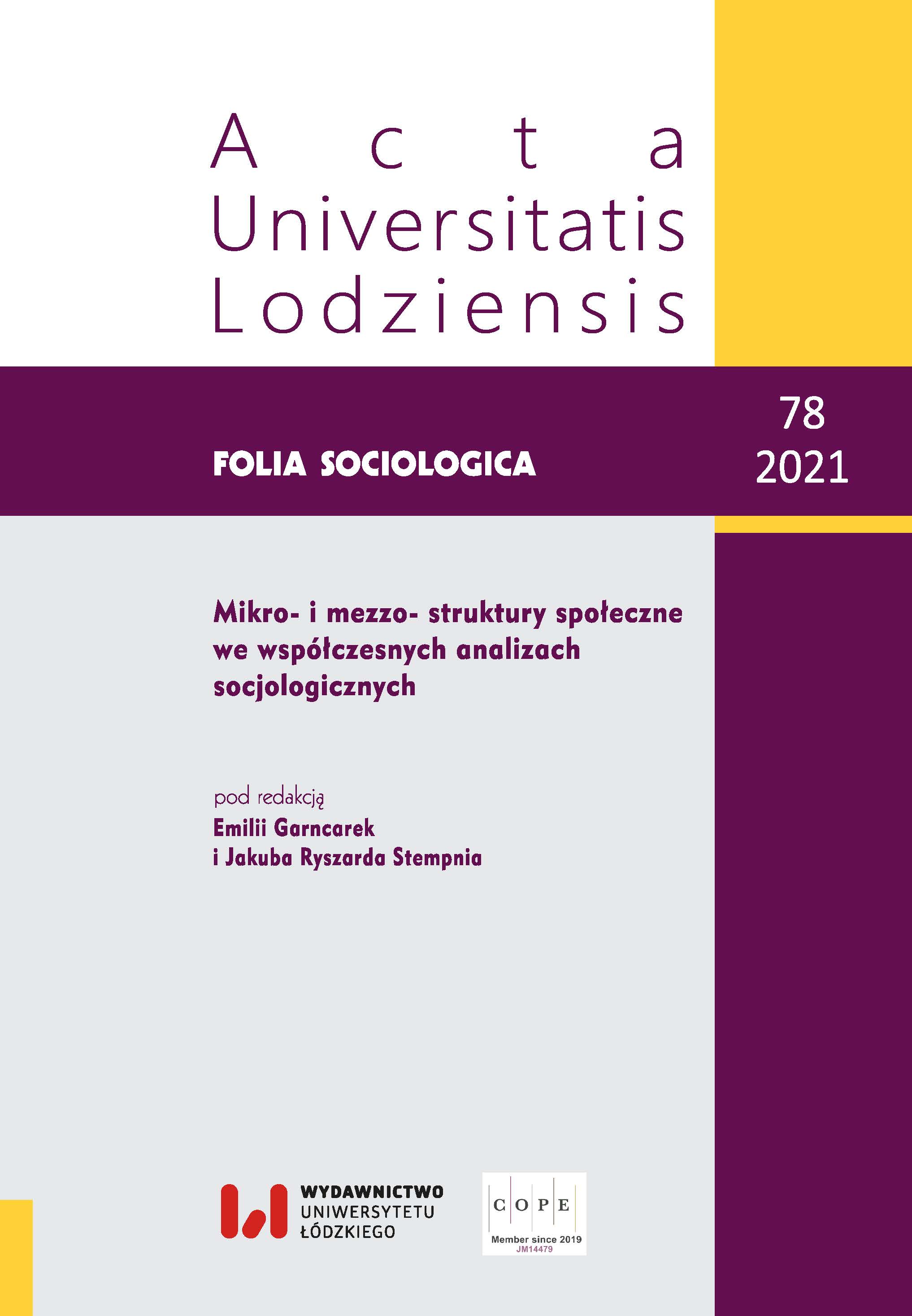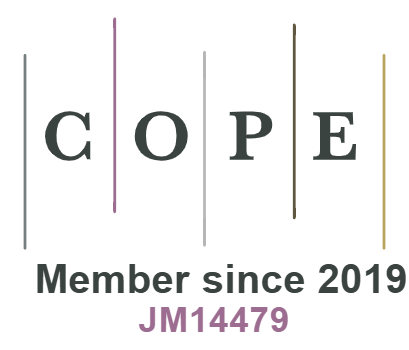„Siła kandydata” i „siła motywacji” jako autorskie, wielowskaźnikowe i uniwersalne narzędzie do opisu kondycji kandydatów na studia wyższe. Społeczne i metodologiczne refleksje
DOI:
https://doi.org/10.18778/0208-600X.78.02Słowa kluczowe:
wielowskaźnikowa analiza danych, siła kandydata, siła motywacji, młodzież akademicka, rekrutacja na studia, uczelnia wyższaAbstrakt
W tekście prezentowane jest autorskie narzędzie do wielowskaźnikowego pomiaru dwóch podstawowych kategorii, stworzonych na potrzeby projektu badawczego „Kandydaci na toruńskie studia archeologiczne”: siły kandydata i siły motywacji. Podstawę do analiz stanowią dane zebrane w procesie rekrutacji studentów na studia na Uniwersytecie Mikołaja Kopernika w Toruniu w systemie Internetowej Rejestracji Kandydatów. W ramach rejestracji na studia kandydaci podają szereg informacji osobowych, dotyczących dotychczasowego wykształcenia, a także ujawniają swoje preferencje w zakresie kierunków studiów. Tworząc siłę kandydata i siłę motywacji, wykorzystano szereg wskaźników. Operacjonalizacja takich sił pozwoli na lepsze rozumienie procesu rekrutacji na studia, a także jego ogólnej specyfiki. Utworzenie opisywanych kategorii umożliwia lepsze interpretowanie zachowań i preferencji kandydatów. Dzięki nim jesteśmy w stanie sprawdzić, czy wiek studentów, ich płeć, pochodzenie, odległość od UMK oraz rodzaj ukończonej szkoły korelują z ich siłą determinacji do studiowania kierunku czy ich potencjałem intelektualnym. Dzięki temu możliwe jest efektywniejsze konstruowanie wymogów rekrutacyjnych oraz strategii marketingowych dla poszczególnych kierunków bądź uczelni. Wskazane możliwe implementacje praktyczne są jedynie przykładami, bo trudno wykluczyć, że w wypadku innych jednostek czy okoliczności ich użyteczność może się ujawnić na innych polach. Siła kandydata to wartość opisująca, na podstawie dostępnych nam danych, potencjał intelektualny i kulturowy kandydata. Dzięki pomiarowi tej wartości uzyskujemy odpowiedź na pytanie o to, czy dany kandydat ma szansę być silnym naukowo studentem. Druga z kategorii – siła motywacji – odpowiada na pytanie, na ile kandydat był zdeterminowany do podjęcia danego kierunku studiów. Pomiar tej wartości rozwiewa wątpliwości dotyczące przypadkowych wyborów kierunku studiów oraz daje odpowiedź na pytania o możliwe alternatywy. Pierwotne badanie dotyczyło archeologii, ale wypracowany mechanizm i sposób analizy może zostać wykorzystany do budowania charakterystyk wszystkich pozostałych kierunków kształcenia akademickiego.
Bibliografia
Bardziejewska M., Brzezińska A., Hejmanowski Sz. (2004), Osiągnięcia i zagrożenia dla rozwoju młodzieży w okresie dorastania, [w:] A. Brzezińska, E. Hornowska (red.), Dzieci i młodzież wobec agresji i przemocy, Wydawnictwo Naukowe Scholar, Warszawa, s. 91–106.
Google Scholar
Czapiński J., Panek T. (red.) (2001), Diagnoza społeczna 2000, Rada Główna Polskiego Towarzystwa Statystycznego, Warszawa.
Google Scholar
Dejna D., Nalaskowski F. (2013), Publiczni, niepubliczni. Przełom, Wydawnictwo Naukowe Uniwersytetu Mikołaja Kopernika, Toruń.
Google Scholar
Dejna D., Nalaskowski F. (2015a), Background przyszłych pedagogów. Na podstawie badań nad młodzieżą planującą podjąć studia pedagogiczne oraz badań nad studentami kończącymi pedagogikę, „Przegląd Badań Edukacyjnych. Educational Studies Review”, nr 21(2) https://doi.org/10.12775/PBE.2015.048
Google Scholar
DOI: https://doi.org/10.12775/PBE.2015.048
Dejna D., Nalaskowski F. (2015b), Plany edukacyjne młodzieży z Grudziądza i okolic: raport z badań, „Przegląd Badań Edukacyjnych. Educational Studies Review”, nr 20(1) https://doi.org/10.12775/PBE.2015.035
Google Scholar
DOI: https://doi.org/10.12775/PBE.2015.035
Dejna D., Nalaskowski F. (2020a), Potencjał badań edukacyjnych bazy danych Internetowej Rejestracji Kandydatów – metoda analityczna desk research, „Kultura – Społeczeństwo – Edukacja”, nr 2, s. 423–455 https://doi.org/10.14746/kse.2020.18.16.1
Google Scholar
DOI: https://doi.org/10.14746/kse.2020.18.16.1
Dejna D., Nalaskowski F. (2020b), Młodzież akademicka. Więzi z państwem i społeczeństwem – międzynarodowe badania porównawcze. Pomysł, warsztat metodologiczny i przebieg badań, „Przegląd Pedagogiczny”, R. 65, nr 2(256), s. 103–124 https://doi.org/10.31338/2657-6007 kp.2020-2.6.
Google Scholar
DOI: https://doi.org/10.31338/2657-6007.kp.2020-2.6
Iwasiewicz A. (1999), Zarządzanie jakością. Podstawowe problemy i metody, Wydawnictwo Naukowe PWN, Warszawa–Kraków.
Google Scholar
Piotrowski K., Wojciechowska J., Ziółkowska B. (2014), Rozwój nastolatka. Późna faza dorastania, [w:] A.I. Brzezińska (red.), Rozwój w okresie dzieciństwa i dorastania, seria I, t. 6, Instytut Badań Edukacyjnych, Warszawa.
Google Scholar
Uniewska A. (2013), O jakości pracy szkoły, Wydawnictwo Naukowe Uniwersytetu Mikołaja Kopernika, Toruń.
Google Scholar
Ziółkowski M. (1995), Pragmatyzacja świadomości społeczeństwa polskiego, [w:] Ludzie i instytucje. Stawanie się ładu społecznego, t. 2, Wydawnictwo Uniwersytetu Marii Curie-Skłodowskiej, Lublin.
Google Scholar
Ziółkowski M. (1999), Pragmatyzacja świadomości i pluralizm strategii przystosowawczych Polaków w latach 1988–1999, „Ruch Prawniczy, Ekonomiczny i Socjologiczny”, R. LXI, z. 3–4, s. 263–267.
Google Scholar
https://serwisy.umk.pl/dzorgan/z/nB8IDX/WNHist_2018_19.pdf (dostęp: 29.01.2019).
Google Scholar
https://www.umk.pl/kandydaci/niezbednik/faq (dostęp: 29.01.2019).
Google Scholar
https://isap.sejm.gov.pl/isap.nsf/download.xsp/WDU20180001000/U/D20181000Lj.pdf (dostęp: 13.04.2021).
Google Scholar
Pobrania
Opublikowane
Jak cytować
Numer
Dział
Licencja

Utwór dostępny jest na licencji Creative Commons Uznanie autorstwa – Użycie niekomercyjne – Bez utworów zależnych 4.0 Międzynarodowe.










